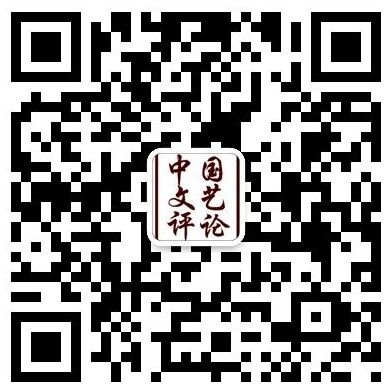
Special Topics•Metamorphosis and Reconstruction: Fostering Originality in Contemporary Literature and Art (I)
■ Creative Originality in Literature and Art among the Relationship of Media Iteration, Realistic Needs, and Human Civilization (PP. 4–14)Lu Kan
Abstract: The creative originality in literature and art is a crucial topic of concern in literary and art theory and criticism. It is the precious value that enables literature and art to survive and reflects the unique contribution of art to civilization and social progress. And it is also an important component of a country's soft power. The creative originality in literature and art is closely related to the development of media, with its most prominent values being its ideological, cultural, and artistic personality. The needs of social realities are the strongest driving force for the originality in literature and art, encompassing realistic, long-term, and diverse social needs. Human civilization is a crucial benchmark for literary and artistic originality. Improving the creative originality in literature and art requires experiencing life, the physical and emotional experiences of life, and more importantly, upholding the purity of artistic ideals and independent thinking.
Keywords: creative originality in literature and art, media iteration, realistic needs, human civilization, purity
■ New Popular Literature & Art and AI-powered Literature & Art:The Emerging Power of Artistic Innovation (PP. 15–25)Wang Zheng
Abstract: In today's world where homogenization of literature and art is widespread, advocating for originality and innovation is crucial. Only by carefully analyzing the causes of homogenization can targeted measures be proposed for improvement. In addition to adhering to the original aspirations of literary and artistic creation, viewing literature and art as knowledge production can help artists enhance their understanding of the originality in literature and art. Simultaneously, understanding literary and artistic innovation from the perspective of literary and artistic ecology requires not only focusing on the innovation within traditional literary and artistic fields but also recognizing the innovative elements of new popular literature and art and intelligent literature and art in the era of artificial intelligence, so as to establish a relationship of equal communication, competition and cooperation among different types of literature and art, and to promote their development while maintaining their respective independence, stimulating their continuous and in-depth development, and fostering a state of literary and artistic innovation characterized by "harmony with diversity."
Keywords: homogeneity, innovation, knowledge production, literature and art ecology
■ "Originality" and "Origin" in Drama (PP.26–36)Sun Huizhu
Abstract: Originality is a crucial issue in theatre studies, but originality cannot be judged superficially because dramatic creation is inseparable from various "origins". The Chinese concept of "origin" can mean different things. On the technical level, adaptations and original plays often draw from different original sources: adaptations are based on literary works, while "original plays" are drawn from non-fictional materials. The latter is not necessarily superior to the former. Many great playwrights, both ancient and modern, both Chinese and foreign, have created numerous adaptations that both draw on and transcend their original sources. International drama awards do not emphasize the distinction between the two. The key lies in whether there is an original spirit — as Wei Minglun puts it, "independent thinking, exclusive discovery, and distinctive expression." On the cultural level, certain unique characters become cultural archetypes after being repeatedly portrayed by successive artists into socially recognized representative images. Cultural archetypes can also serve as original material in dramatic creation — either through reconstruction, questioning, or comparison with other characters. The highest achievement of an artist with an original spirit is when the characters they create, after the selection of history, ultimately become cultural archetypes.
Keywords: originality, adaptation, original spirit, cultural archetype, life archetype
■ Four Dimensions of Reconstructing Literary and Artistic Originality in the Era of Digital Intelligence(PP. 37–46)Li Yangquan
Abstract: In the literary and artistic landscape of the current digital age, there are obvious phenomena of homogeneity and typification of creations, and deficiency in literary and artistic originality. Key contributors to this situation are the accelerating social context of creation, the traffic-first principle of literary and artistic platforms, the lack of innovative awareness among creative subjects, and the intransitive nature of literary and art criticism. Reconstructing the originality in literature and art in the digital age requires addressing these four dimensions: fostering a social creative environment focused on high-quality literary and artistic creation, building a sustainable and healthy competitive literary and artistic platform system, actively adopting media technologies for literary and artistic innovation, and promoting the online transformation of literary and art criticism. Building on these foundations, a joint force can be forged to advance the high-quality development of contemporary literature and art.
Keywords: digital age, creative originality in literature and art, accelerating society, literary and artistic platform, literary and art criticism
■ Breaking the Dilemma of Creative Originality in Film and Television (PP. 47–55)Tan Fei
Abstract: Faced with the feedback realities from the increasingly challenging consumer market, we must acknowledge the significant generational gap between creative investment and the audience as the main consumer. The flow of valuable upstream resources affects not only the audience confidence in literary and artistic products but also the enthusiasm of the new generation of literary and artistic workers. The current development of Chinese culture directly impacts the nation's international image. In China, a country with a rich history, we should, in this era of rapid information flow, embrace global development with a broader perspective and boost confidence in "cultural exports" through practical and effective means.
Keywords: communication, cognition, innovation, originality
Criticism and Contention
■ Four Questions about AI Art (PP. 56–67)Fang Weigui
Abstract: Currently, ChatGPT and some other generative AI programs have permeated the fields of literature and art. Deep learning and massive datasets enable these AI models to create visual art, musical works, poems, novels and so on. The democratization and popularization of art have blurred the boundaries between creators and consumers. The application of AI in the field of creative art has further sparked international academic discussions on creativity and complex moral issues, particularly concerning originality, authorship and authenticity. If anyone could create art simply by pressing a button, the value of creativity, originality, and artistry would probably gradually diminish. So, what exactly is the significance of "AI art"?
Keywords: AI art, authorship, originality, creativity, artistic value
Diverse and Extensive Art Phenomena
■ Literature, Art, and Trickery: Artificial Intelligence and Writing (PP. 68–74)[US] Janell Watson / Translated by Yang Jiayi
Abstract: Since the advent of applications based on large language models such as ChatGPT, researchers in the field of artificial intelligence (AI) and executives at major tech companies have expressed a disturbing message, warning that AI may lead to human extinction. What they imagined was an apocalyptic future comparable to science fiction. So why do these AI creators and marketers promote such a gloomy narrative? Some argue that they are actually exaggerating the threat to create a sense of urgency and attract more attention and funding. At the same time, the emphasis on technological threats also distracts attention from those who are pursuing power, wealth, and scarce resources (like energy, water, and skilled labor).
Keywords: artificial intelligence, literature, The Three-Body Problem, Michel Serres
■ The Aesthetic Experience and Time Value of "Chinese Style" Single-Player Games (PP. 75–86)Wei Bojian
Abstract: This article proposes the concept of "Chinese-style" single-player games by analyzing the representative single-player games created on the theme of Chinese history and mythology in the 30 years from Xuan Yuan Sword released in 1990 to Black Myth: Wukong released in 2024. Then, through the intensive reading of the texts of specific works, explained how the "Chinese-style" single-player games shape the player's aesthetic experience through three levels: the stimulation of "culture image", the connection of "sense of history", and the construction of "artistic conception world".Finally, it points out the value of the times of "Chinese-style" single-player games. This article points out that players generate "cultural imagery" aesthetic experience through interaction with the game world, and then form a "sense of history" connecting the game world and the real world, and finally form a feeling of individual finiteness and a praise of the lofty value beyond individual finiteness in the "artistic conception world". "Chinese style" single-player games have expanded the digital development space of excellent traditional Chinese culture, inherited and developed traditional Chinese aesthetic ideas. It is an important way for players in the digital age to understand and engage with excellent traditional Chinese culture.
Keywords: digital game, aesthetic of digital game, criticism of digital game, theory of literature and art
Art Beyond China
■ From Oriental Style to Chinoiserie: On Wittkower's Research Regarding the Western Dissemination of Chinese Art (PP. 87–100)Zhang Jiafeng
Abstract: Civilizational mutual learning serves as the inexhaustible impetus for human artistic creation. Although Chinese and Western civilizations originated from opposite ends of the Eurasian continent, Chinese art has profoundly shaped the trajectory of Western art history. By examining stylistic categories such as the Oriental Style and Chinoiserie, Wittkower traces the historical lineage and cultural logic of Chinese art's Western dissemination. His analysis spans three pivotal phases: the Oriental Style under the Pax Mongolica, Chinoiserie as a material-cultural phenomenon intertwined with consumer trends during the Age of Exploration, and the Anglo-Chinese gardens of the Enlightenment era that catalyzed the modern transformation of Western aesthetics. Simultaneously, Wittkower's transcultural art historical research reveals the theoretical potential of spatial dynamics in art historical knowledge production. It reflects a methodological imperative to maintain dialectical tension between openness and closure, while transcending Western-centric paradigms in art historiography.
Keywords: Oriental style, Chinoiserie, Wittkower, spatial turn
A New Introduction to the History of Art
■ The Construction of the National Discursive Community in Chinese Cinema during the War of Resistance Against Japanese Aggression (PP. 101–111)Zhao Chunxiao
Abstract: During the War of Resistance against Japanese aggression, Chinese cinema under the Chinese united front against Japanese aggression was closely intertwined with the fate of the nation. It continuously extended downward and rooted itself in grassroots communities in the rear areas and liberated areas, thereby constructing a broad and powerful national discursive community. Through the constant adjustment of discursive expressions, the connection between Chinese film creation and the general public became increasingly close, and the awareness of the people's subjectivity in the narrative of the War of Resistance against Japanese aggression was constantly deepened. The construction of the national discursive community of Chinese cinema during the War of Resistance against Japanese aggression provided important discursive experience for forging close interactive relationships between Chinese literary and artistic creation, the nation-state, social reality, and the general public. It also embodied the resilient cultural gene of Chinese cinema amid the gaps of history.
Keywords: the War of Resistance against Japanese aggression films, national discursive community, genre creation, people's nature
Interview with Renowned Experts
■ Seeking Beauty in the Poetic Land of Far Northern Russia: An Interview with Translator Gu Yunpu (PP. 112–124)Interviewed by Li Yutao
Inside Front Cover
Chinese Literary Critics: Zong Renfa


Inside Back Cover
Recommendation of Important Academic Organizations in Literary and Art Theory and Criticism:China Film Critics Association


Back Cover
Recommendation of Woodpecker Series: A Collection of Works by Literary and Art Critics



中国文艺评论网

“中国文艺评论”微信公号

“中国文艺评论”视频号